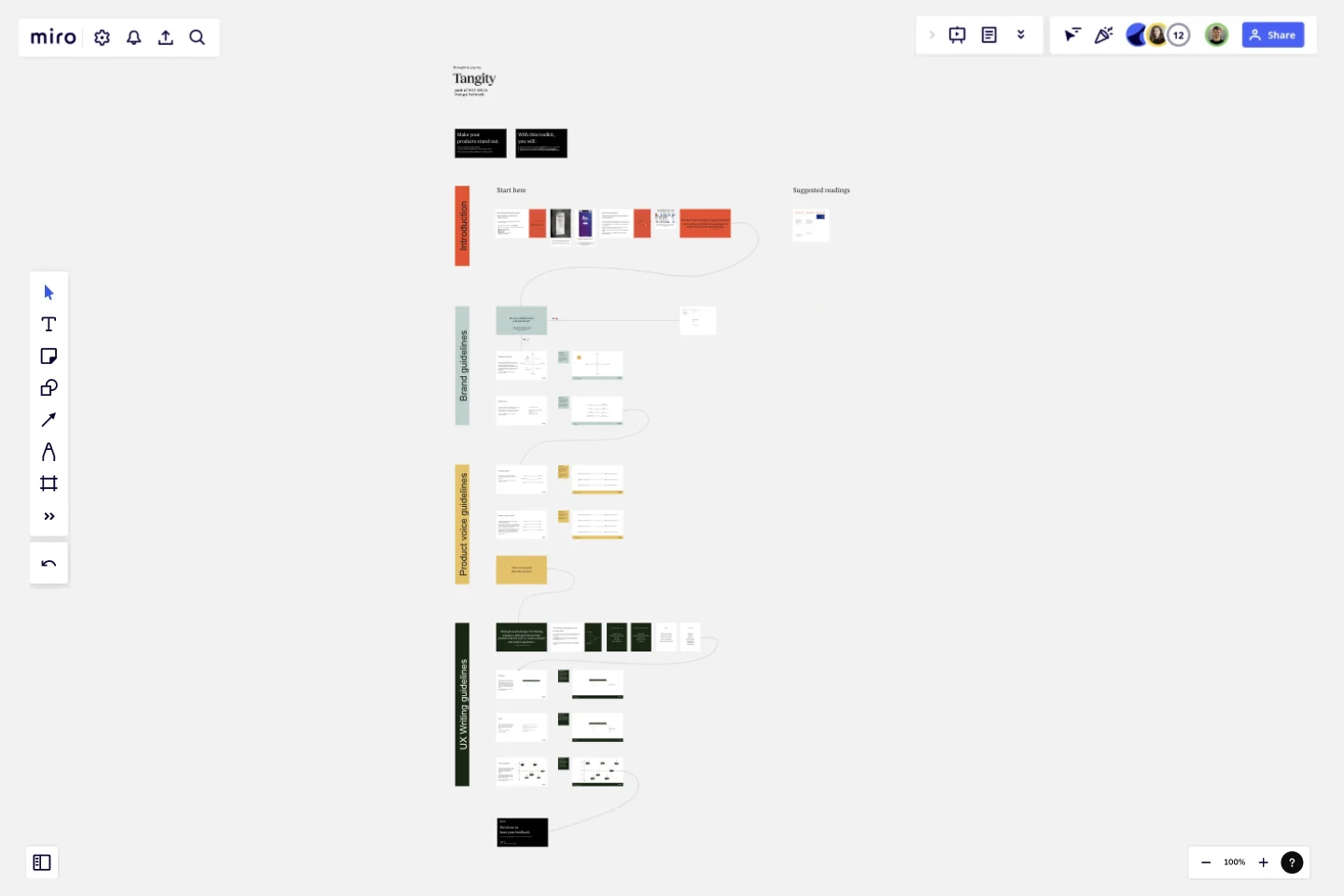Product Voice Design toolkit
The Product Voice Design toolkit features various tools that allow your team to design guidelines on how your products speak to people through written or spoken words.
It helps you establish more human relationships with your customers by creating better conversations that improve people's experience and ultimately increase brand loyalty, brand equity, and ROI.The toolkit is the result of the longstanding work in Content Strategy and UX Writing with corporate clients in Italy, during which we crafted and refined these tools to be comprehensible and useful. We wouldn't want you to waste your time creating documents that no one will read or use.
When to use our Product Voice Design toolkit?
Whether you have already established brand guidelines or not, this toolkit comes in handy when creating or redesigning a physical or digital product.Starting from your brand assessment, you will define step-by-step how your product talks and adapts to users and situations.In the end, you'll come up with clear and well-defined guidelines, including style rules and a glossary, that will help you create a coherent, memorable, and consistent experience that people will enjoy.
How does the Product Voice Design toolkit work?
We will guide you through a journey in which you'll define your product voice:
First, you'll immerse yourself in the topic thanks to a brief introduction that explains why it is essential to take care of your product voice;
Then follows the brand assessment: what is its personality? How would you define its voice?
Afterward, you will consider your specific product and its audience and see how your brand voice adapts and builds your product voice. For instance, think about how the brand voice can vary if you talk to your final customer or your employees, and how the product voice needs to consider the context and people's emotions;
Finally, you will define the rules and the glossary to help your writer deliver coherent and pleasant conversations saving time and improving quality. And now, you can start designing the entire product, down to the last detail.
This template was created by Tangity.
Get started with this template right now.
BPM
Works best for:
Diagramming
The BPM (Business Process Management) template is a visual tool for modeling, analyzing, and optimizing business processes. It provides a structured framework for documenting process flows, identifying bottlenecks, and improving efficiency. This template enables organizations to streamline operations, enhance productivity, and drive business performance. By promoting process transparency and agility, the BPM template empowers teams to achieve operational excellence and deliver value to stakeholders.
Product Positioning Canvas
Works best for:
Product Management, Planning
The Product Positioning Canvas template aids product managers in defining and communicating product positioning strategies. By analyzing target markets, competitive landscapes, and unique value propositions, this template helps differentiate products in the market. With sections for defining brand attributes, messaging, and market segments, it enables teams to craft compelling positioning statements that resonate with target audiences. This template serves as a guide for aligning product positioning with business objectives and driving market success.
Product Strategy Canvas
Works best for:
Product Management, Planning
The Product Strategy Canvas template aids product managers in defining strategic direction and priorities. By outlining key components, such as target markets, value propositions, and differentiation strategies, this template clarifies product vision and positioning. With sections for analyzing market trends and competitive landscapes, it facilitates informed decision-making in product strategy development. This template serves as a strategic blueprint for driving product success and achieving business objectives.
SMART Goals Template
Works best for:
Prioritization, Strategic Planning, Project Management
Setting goals can be encouraging, but can also be overwhelming. It can be hard to conceptualize every step you need to take to achieve a goal, which makes it easy to set goals that are too broad or too much of a stretch. SMART is a framework that allows you to establish goals in a way that sets you up for success. SMART stands for Specific, Measurable, Attainable, Relevant, and Timely. If you keep these attributes in mind whenever you set goals, then you’ll ensure your objectives are clear and reachable. Your team can use the SMART model anytime you want to set goals. You can also use SMART whenever you want to reevaluate and refine those goals.
Data Org Chart
Works best for:
Org Charts, Operations, Mapping
The Data Org Chart template provides a visual representation of data-related roles and relationships within an organization. By mapping out data management responsibilities and dependencies, teams can enhance data governance and improve collaboration. With features for customizing data roles and connections, this template empowers teams to optimize data processes and ensure data integrity and compliance.
Epic & Feature Roadmap Planning
Epic & Feature Roadmap Planning template facilitates the breakdown of large-scale initiatives into manageable features and tasks. It helps teams prioritize development efforts based on business impact and strategic objectives. By visualizing the relationship between epics and features, teams can effectively plan releases and ensure alignment with overall project goals and timelines.
